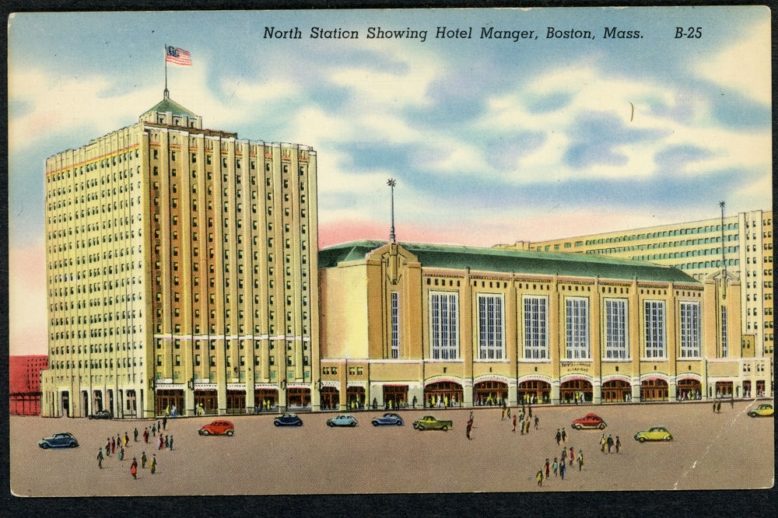Era: New Boston(~1950-1995)
Urban renewal, the taking, Government Center, Charles River Park, highways, bussing
Inspired by his experiences at the West End House and Hale House, Joseph Rosen became one of the country’s leading engrossers, thanks in part to the kindness of James Jackson Storrow. He inscribed over 125,000 diplomas during his career, mainly for Harvard graduates, but he also produced honorary degrees for dignitaries such as the Roosevelt’s, Kennedy’s, and Winston Churchill. Despite his success, he never forgot the opportunities he received in the West End and found ways later in life to honor the West End House and its great benefactor.
In 1943, Boston resident Louis Stern wrote a letter to the editor of the Boston Globe, proposing that the West End be razed to build a new airport, conveniently located downtown. This idea was never seriously considered, though the East Boston Airport (Logan Airport) has its own controversial history of urban renewal.
Easily missed as one trundles down Cambridge Street or behind the golden dome of the Massachusetts State House, Ridgeway Lane in the historic West End is one of Boston’s longest and narrowest streets. Often mistaken for a simple alley, it has served ropewalk workers, residents, Suffolk University students, and the occasional criminal on the run for over 250 years. As one walks the length of this dark road, surrounded by brick on both sides and heavy paving stones below, it is hard to imagine much life here. Yet, hidden, urban pathways like Ridgeway Lane hold many stories worth telling.
In 2015 Converse Inc. moved its world headquarters to Lovejoy Wharf in the West End. Its 214,000 square foot facility was a major part of an effort to rejuvenate the former industrial area bordering the Charles River and the North End. This was, however, not the first time a business founded by members of the Converse family chose the West End as an advantageous place to set up business.
As the Salvation Army stormed into Boston to continue its evangelical and humanitarian mission, it chose a location in the West End for its headquarters in Massachusetts. From this initial foothold in the city, the Salvation Army and its leader Annie Shirley withstood the persecution of established churches and angry mobs, and expanded its operations throughout New England. The organization continues to pursue its mission today as one the country’s largest and most visible charities.
For tens of thousands of daily commuters, North Station is a final destination to work and a starting point for home. For many others, it is a stop along the way to somewhere else. But few of today’s commuters know that over the past two centuries, there have actually been several train stations in the West End– built in grand style – that predated the North Station we know today.
Raymond Reddick, a lifelong Boston resident who is now 74 years old, has spent decades collecting, documenting, and speaking to different audiences about his extensive African-American family history with deep ties to the historic West End. After his grandmother, Ruthena Felton King Reddick, passed away in 1985, Ray began his ongoing genealogical research, which started with stories from family members and countless boxes of family artifacts in his possession. Ray Reddick approached The West End Museum to collaborate on a project that highlights his nineteenth-century ancestors — West Enders and Black Bostonians — captivating lives. Northeastern University’s Reckonings project has collaborated with Reddick and The West End Museum to produce, after a series of oral history interviews, a two-part, co-created report that spotlights Ray Reddick’s family history.
The story of the fabled Boston Garden is nearly as winding as the 10 tracks that snake from beneath its modern-day successor on Causeway Street. The intersection of frontier entrepreneurship and New England business interests, the arena came to represent the crosswinds of the rapidly changing American public and the economic forces that shaped it during the Roaring Twenties.









